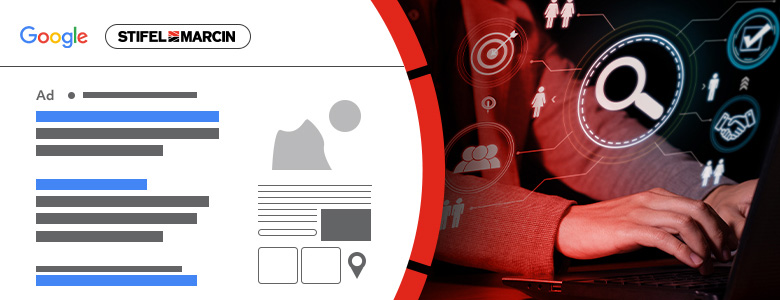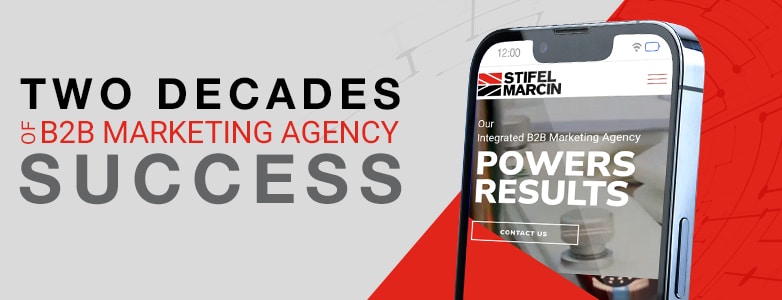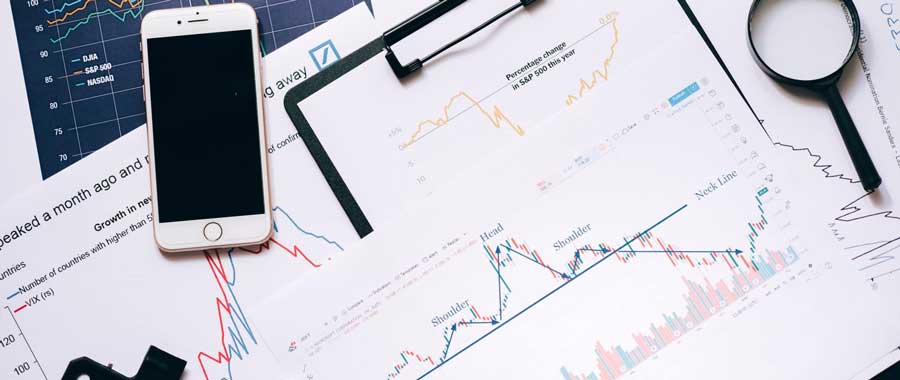Understanding B2B SEO Search Engine Results and the Rise of SERP Features
Search engine results (SERPs) have changed and so has the way B2B buyers engage with them. Instead of clicking through multiple links, users can now get answers instantly through AI overviews, “People Also Ask” sections, image packs, and other dynamic SERP features. For marketers, this means traditional SEO tactics may not be enough. To stay visible and competitive, your strategy needs to account for how, and where, your content appears within the search results. A strong B2B SEO search engine results strategy starts with understanding the modern SERP landscape. At Stifel Marcin, we help B2B brands optimize for visibility across today’s evolving SERPs. Explore our SEO and Answer Engine Optimization (AEO) services to learn more. Why SERPs Matter More Than Ever in B2B SEO Today’s B2B buyers are highly self-directed, conducting extensive research before ever filling out a form or speaking with sales. That journey often begins (and sometimes ends) with the search engine results. With AI-generated answers, featured snippets, and expandable content like “People Also Ask,” decision-makers can get the information they need without ever clicking through. For B2B marketers, that shift means visibility depends on more than just ranking. It’s about owning space within modern SERP features. Our agency helps clients build SEO and SERP feature strategies that increase brand authority, deliver value early in the funnel, and drive measurable engagement, even in a zero-click environment. What are Some Key Modern SERP Features? Search engines are no longer delivering simple lists of links. They are delivering layered, dynamic results designed to answer user intent instantly. Knowing what SERP features exist, and how to appear in them, is critical to building a strong B2B SEO search engine results strategy. Our infographic outlines some of the most prominent features shaping the current search experience. Here is a closer look at the ones that matter most for B2B visibility: Building a SERP Feature Strategy for B2B Brands With many ways to appear in search engine results, B2B marketers need more than traditional SEO; they need a clear strategy for capturing high-value placement across today’s SERPs. Some of the most effective strategies include: Of course, every B2B business is unique. Your industry, audience, and offerings influence how and where you should appear. That is where our team comes in. We help brands develop SERP feature strategies that drive awareness, trust, and engagement, without guessing or overextending internal resources. Reach out to discuss your SEO needs. Why Ignoring SERP Features Hurts Long-Term Visibility Ranking well in organic search is still essential but it’s no longer the only metric that matters. Modern SERPs are filled with features that surface answers, visuals, and brand content before users click. Overlooking these placements can mean missing out on visibility where your audience is actively engaging. With the rise of AI-generated overviews and zero-click results, marketers need to think beyond blue links. Securing a presence in SERP features reinforces brand authority and increases the chance of early-funnel discovery, often before a user even lands on your site. We work alongside B2B marketers to strengthen SEO strategies with structured, feature-focused approaches that align with how search is evolving, helping you earn visibility where it matters most. Learn more about AEO and see how our experts can help you reach your goals. Frequently Asked Questions About SERP Features What’s the difference between SEO and AEO?SEO focuses on improving rankings and traffic, while AEO is about structuring content so search engines and AI tools can extract and present answers, often directly in SERP features. A successful B2B strategy often blends both. Review our chart that details the differences. How do I know which SERP features my branding is already showing up in?Martech tools can help you track this. Our agency also performs in-depth SEO audits to assess your current SERP visibility and pinpoint where opportunities exist for richer placement. Are SERP features mostly relevant for consumer brands?Not at all. B2B buyers often rely on trusted, quick-access information during their research process. Features like Featured Snippets and Video Carousels can significantly influence consideration and credibility in B2B markets. What is involved in working with your agency on SEO and AEO?We start a discovery session to understand your goals, then conduct a technical and content audit. From there, we build a custom strategy that aligns with your audience, industry, and visibility goals, while delivering on-going support, content creation, and optimization to earn placement across SERPs. Learn more about our process. How long does it take to see results from a SERP feature strategy?That depends on your starting point, competition, and how much existing content can be optimized. We will help set realistic expectations and track performance along the way. Seize the Opportunity for B2B Search Visibility Today’s search is about more than rankings; it’s about recognition, relevance, and reaching buyers where decisions start. As SERP features continue to evolve, marketers need strategies built not just for keywords, but for placement across the entire search experience. Partnering with B2B SEO experts like Stifel Marcin can help you make sense of this complexity. From technical optimization to content strategies aligned with answer engine optimization, we work with clients to improve visibility and drive engagement across the funnel. Contact us today and talk about how your brand can earn more valuable space in search results. Stifel Marcin – The B2B Marketing Agency Unlike many advertising and marketing agencies, B2B isn’t just something that we do, it’s all we do. We’ll work to help your brand achieve its goals through the strategic combination of creativity, communication and technology. Our focused client intake processes give us the ability to thoroughly understand your business, products and objectives, working to identify the competitive advantages and opportunities that will grow awareness, leads and sales. We develop innovative marketing plans with strategic, data-driven processes, presenting complex ideas and compelling messages that position your business ahead of the competition. As your cooperative partner, our integrated B2B marketing agency is dedicated to your success. If you have questions about SEO and answer engine optimization, contact us today.
Understanding B2B SEO Search Engine Results and the Rise of SERP Features Read More »





